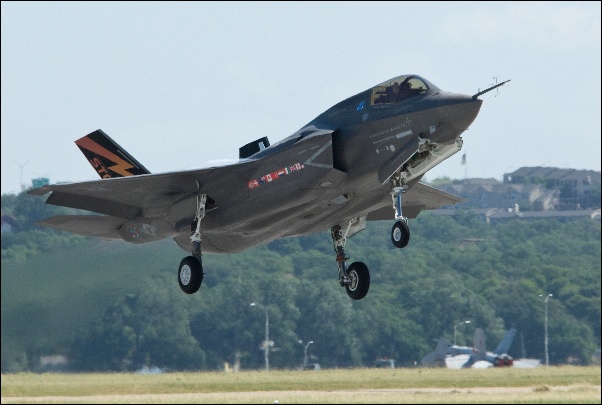Future Navy & RAF Fighter Flies For The First Time
Ministry Of Defence (UK)
Future Navy and RAF fighter flies for the first time
The successful first flight of a supersonic fighter jet, the next generation of Navy and RAF jump-jets, took place on 11 June at Lockheed Martin's Texas plant.

The F35B, a stealthy fighter-bomber, made a conventional take-off and landing, and climbed to 15,000 feet for a series of handling, engine and other systems checks. It landed successfully after 46 minutes in the air.
Air Commodore Mark Green, MoD Joint Combat Aircraft (JCA) team leader said: "This is a great achievement by Lockheed Martin, Northrop Grumman and BAE Systems and they should be congratulated for their endeavours.
"This programme is constantly breaking new ground, and with the first flight milestone behind us, we look forward to the demonstration and associated flight test of the aircraft's Harrier-like short take off and vertical landing capabilities in the coming months."
The supersonic stealthy fighter-bombers will form the next generation of Navy and RAF jump-jets and the F35B is one of three variants of the US Department of Defense Joint Strike Fighter (JSF) project. MoD is a partner in the JSF programme and is investing £1.8Bn developing the aircraft.
The F35B was flown by a British pilot, BAE Systems employee and former RAF Harrier pilot, Graham Tomlinson.
The JSF (Joint Strike Fighter) is the aircraft of choice to fulfil MoD's Joint Combat Aircraft requirement and fly off the two new Royal Navy aircraft carriers.
NOTES
1. The STOVL variant rolled-off the production line 18 December 2007.
2. Compared with the conventional take-off and landing F-35A already flying, the F-35B has a shaft-driven lift fan mounted behind the cockpit, roll ducts installed in the wing and swivelling nozzle fitted to the engine. In STOVL mode, doors open above and below the lift fan, a clutch engages to drive the two-stage contra-rotating fan from the engine and the rear nozzle pivots downward to deflect engine thrust.
3. Since 2001 UK industrial expertise has made a significant contribution to the success of JSF. BAE Systems produce the tail section of the airframes, Rolls Royce partnered with GE for the F136 engine and produce the lift fan for the STOVL variant, and Martin Baker makes the Ejection Seats.
4. UK companies and locations involved include BAE Systems, Salmesbury; Rolls Royce, Filton, Bristol; Ultra Electronics, High Wycombe; Honeywell Normalair - Yeovil, Goodrich Actuation, Wolverhampton, Liverpool. GE Aerospace, Cheltenham; Martin Baker, High Wycombe and Selex, Farnborough.
5. Images can be found by visiting http://www.lockheedmartin.com
Client ref 115
/ 2008
COI ref 162048P
ENDS
Latest World News | Top World News | World Digest | Archives | RSS


 UN News: Healing Page By Page In Earthquake-affected Türkiye
UN News: Healing Page By Page In Earthquake-affected Türkiye Save The Children: Rate Of Attacks On Healthcare in Gaza Higher Than In Any Other Conflict Since 2018
Save The Children: Rate Of Attacks On Healthcare in Gaza Higher Than In Any Other Conflict Since 2018 UN News: Green Light For New Cholera Vaccine, Ukraine Attacks Condemned, Action Against Racism
UN News: Green Light For New Cholera Vaccine, Ukraine Attacks Condemned, Action Against Racism Laureus: Grand Slam Champion Garbiñe Muguruza Announces Retirement Ahead Of Laureus World Sports Awards
Laureus: Grand Slam Champion Garbiñe Muguruza Announces Retirement Ahead Of Laureus World Sports Awards Carbon Market Watch: Going For Green - Is The Paris Olympics Winning The Race Against The Climate Clock?
Carbon Market Watch: Going For Green - Is The Paris Olympics Winning The Race Against The Climate Clock? New Zealand Defence Force: NZDF Working With Pacific Neighbours To Support Solomon Islands Election
New Zealand Defence Force: NZDF Working With Pacific Neighbours To Support Solomon Islands Election